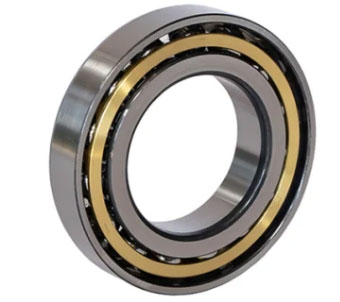Double-row angular contact ball bearings
In the sphere of mechanical engineering, bearings are essential components that reduce friction and facilitate smooth motion between parts. Double-row angular contact ball bearings stand out due to their ability to support combined loads while offering enhanced rigidity and precision. This article explores the design, features, advantages, and applications of double-row angular contact ball bearings, highlighting their significance in various engineering applications.

Design and Features
Double-row angular contact ball bearings consist of two rows of balls, contained within an inner and outer ring. These bearings feature raceways that are angled to accommodate axial and radial loads simultaneously. The two rows of balls are arranged back-to-back, ensuring that the bearing can support both axial and radial loads in both directions. Key components of these bearings include:
Inner and outer rings: The concentric rings form the base of the bearing structure, providing a stable platform for the balls to move in.
Rolling elements: The balls, made of high-quality materials such as steel, ceramic, or hybrid materials, enable smooth rotation between the inner and outer rings.
Cage: The cage maintains uniform spacing between the balls, preventing contact during rotation and reducing friction.
Seals: Bearings may incorporate seals to protect the internal components from contamination and retain lubrication.
Advantages
Double-row angular contact ball bearings offer numerous benefits, including:
Load capacity: Their unique design allows them to support combined axial and radial loads effectively, making them ideal for applications with complex loading conditions.
Rigidity and precision: The back-to-back arrangement of the balls ensures enhanced rigidity and precision, resulting in superior performance.
Space efficiency: The compact design allows for efficient use of space in applications with limited room for bearings.
Ease of installation and maintenance: These bearings are designed for straightforward installation and maintenance, reducing downtime and associated costs.
Applications
Double-row angular contact ball bearings are employed in a variety of industries, including:
Automotive: In vehicles, these bearings are used in wheel hub assemblies, steering systems, and transmission components, ensuring smooth and reliable operation.
Pumps and compressors: Double-row angular contact ball bearings support the demanding loads and high-speed requirements of pumps and compressors in various industries.
Industrial machinery: These bearings are utilized in machinery such as textile machines, printing presses, and conveyor systems, where they offer excellent performance under combined loads.
Agricultural equipment: In agricultural machinery, such as tractors and harvesters, these bearings provide durability and reliability under harsh conditions.
Wind turbines: Double-row angular contact ball bearings are used in wind turbine systems to handle the complex loads generated by wind forces and ensure smooth operation.
Conclusion
Double-row angular contact ball bearings play a crucial role in a wide array of applications across diverse industries. Their unique design, load capacity, and precision make them a preferred choice for engineers and manufacturers seeking optimal performance under demanding conditions. As technology continues to advance, double-row angular contact ball bearings will remain integral components in the development of high-performance machinery and systems.













